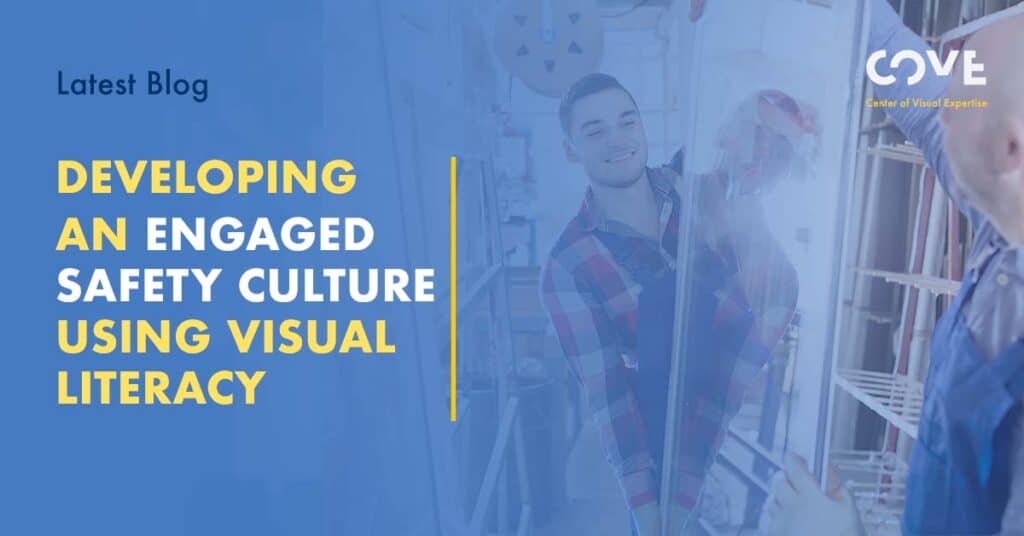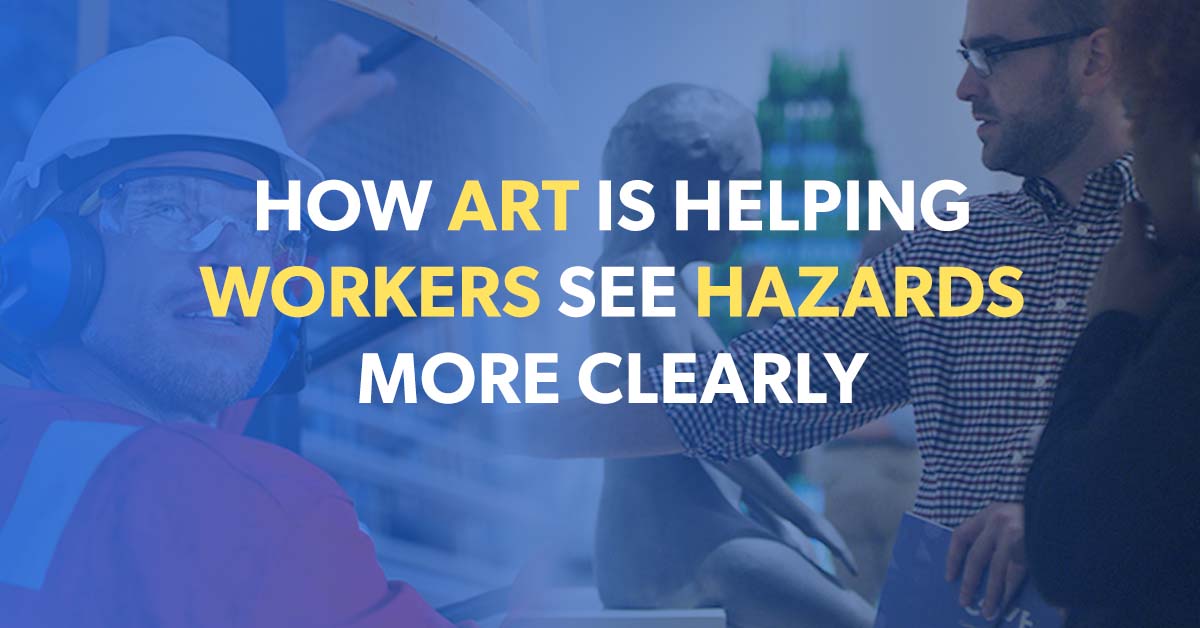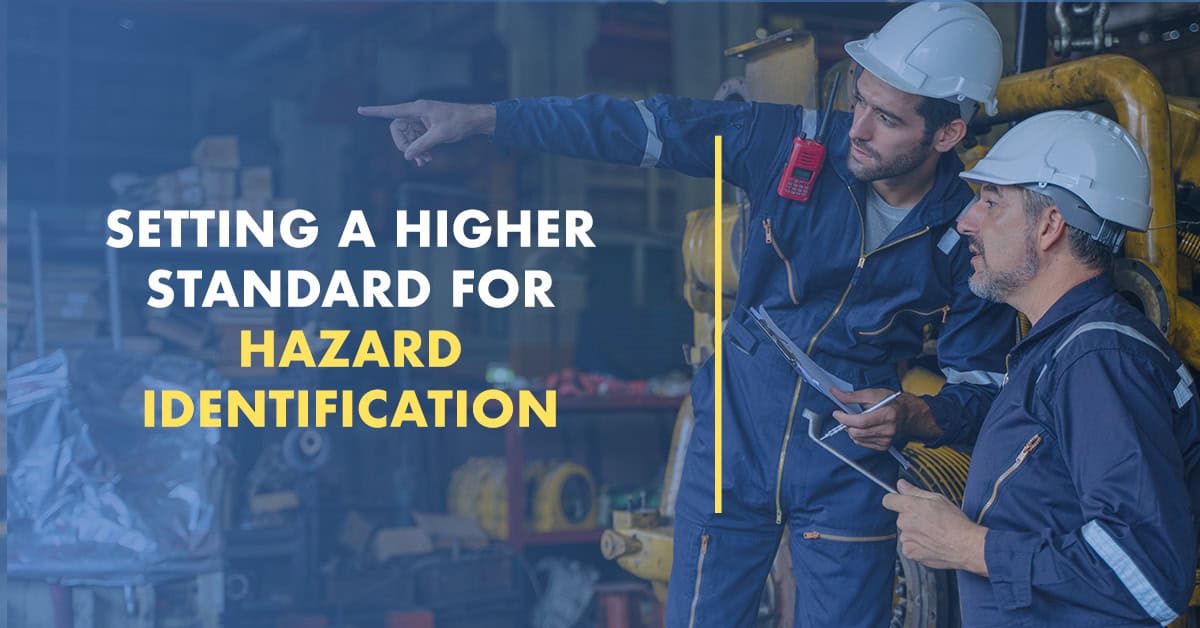There are a myriad of articles and studies available that promote the need to cultivate a safety culture to improve workplace safety performance. EHS Today mentions that companies with a strong safety culture typically experience fewer at-risk behaviors and consequently experience lower accident rates, lower turnover and absenteeism, and higher productivity.
In these same articles, you’ll find different best practices and guidance for building or improving safety culture. Sure, having the proper safety tools and management systems in place are important, but they are only one piece of the puzzle. It’s employee engagement that primarily leads the effort. If an organization can get their employees to work together, communicate and contribute to safety initiatives, then they’ll start seeing a culture that yields better performance outcomes.
In this article, we discuss why employee engagement is critical in creating safety culture and how visual literacy training facilitates the engagement, interaction, and involvement needed to build successful safety programs.
The Role of Employee Engagement in Safety Culture
When we talk about employee engagement with safety, we’re referring to employees who have a clear understanding of the organization’s safety objectives and who are personally invested in achieving those outcomes. There is a culture of safety commitment, instead of one focused on compliance alone.
Workplaces with strong safety cultures have employees that:
- Have a voice in safety initiatives
- Understand and fulfill safety processes and procedures
- Develop and practice safe work behaviors
- Are equipped with the tools and training to work safely
- Encourage and support others in workplace safety
- Communicate and report safety issues and concerns
When employees are not engaged and not fully invested in a safety culture, it can affect day-to-day operations and put workers’ safety at risk. In fact, unengaged workers have 37 percent higher absenteeism, 49 percent more accidents and 60 percent more errors and defects. An organization can invest significantly in new safety programs and management systems, but if there is no focus on keeping employees engaged, then these efforts will simply fall by the wayside.
Introducing Visual Literacy into Safety Programs
As part of any safety program, activities such as hazard identification and recognition, safety observations, and risk management are commonly performed. Now while we typically use all of our senses to complete these activities, the ability to see supersedes the others, which means that employees need to have strong visual skills, skills that are only learned through visual literacy training.
Many organizations may say they have tools and systems in place to help employees identify issues, report hazards, and provide feedback easily, and don’t think about the need for visual training. They rely upon the successful execution of these tools and systems without enabling success by improving how people can see and interpret what they see more effectively.
Because when safety programs are filled with checking boxes, data processing, submitting performance logs, or action plans, the human aspect gets lost in the equation and engagement suffers. Essentially, an organization’s culture is viewing safety as a transaction that “just needs to get done” when there needs to be active discussions about safety (top-down and across the organization), an employee’s self-awareness and critical understanding of hazards, and a commitment to protecting one another from harm.
Visual literacy does just this; it transforms cultures, engages workforces, and helps move safety forward.
The white paper Visual Literacy as a Foundational Building Block for Engaging and Developing Valuable Employees discusses how at a fundamental level, visual literacy trains employees on understanding and interpreting what they see in a meaningful way—including obvious and hidden hazards that are present.
Imagery can be a piece of equipment, worker behaviors (including leadership behaviors and the outcome of leader decisions), a production process, organizational systems, an incident, near-miss or any construction activity. Employees takes these images and learn how to analyze them and start a dialog. As a result, employees obtain the skills for better safety observations, hazard recognition, risk management, analysis and problem solving.
Visual literacy training equips employees with the skills to improve their visual acuity, while also engaging and empowering them to work safer, actions that characterize a model safety culture.
The organization notices a positive change. Suddenly, working in silos and “getting the job done” attitudes shift to an inclusive, collaborative safety culture that commit to work together to manage risk without fear of reprisal.
How Visual Literacy Boosts Safety Engagement
According to a Gallup report, only 20% of employees are engaged at work. Not only are employees distracted personally with the impacts of the pandemic, but COVID-19 guidelines have caused many organizations to limit, if not eliminate, face-to-face meetings and interactions. These changes are necessary given the circumstances, but many organizations do not realize that they have affected employee engagement and, in some cases, contributed to low morale.
To re-engage employees, organizations must consider visual literacy training to enhance their safety culture. But to effectively engage, we must first know what employees value at work. The following is a list of common employee values highlighted in our white paper on visual literacy and engagement, along with a brief explanation on how visual literacy helps fulfill those values to better engage employees in safety.
- Leader/employee relationships: Hazard recognition and risk assessment and management are not solo endeavors. Visual literacy training, which emphasizes interactive exercises amongst senior leaders and employees, and participant input and engagement creates these relationships, even when conducted remotely.
- Sense of purpose: Employees trained in visual literacy have a sense of purpose, when they know the goal is identify and mitigate hazards at their workplace. But even deeper, employees learn the meaning of each hazard, the hazard’s potential, and can start asking questions to further manage risk.
- Caring about an employee’s well-being: The purpose of investing in visual literacy is straightforward—to protect the health, safety, and well-being of employees. An employer that makes the investment earns employee trust and respect.
- Feeling part of a team: Just as safety should be practiced, visual literacy training is not self-paced; it is a group activity, using virtual tools to build group cohesion and relationships. For example, during hazard recognition activities, observations and critical thinking notes are used for group discussions and to make decisions collectively.
- Feeling valued as an individual contributor: During training, individual perspectives and opinions about hazard images are encouraged. Employees can discuss freely what they see, what it means, and what can be done to control the hazard.
Moving Safety Forward With Visually-Focused Training
For organizations to improve safety performance, they often invest significant resources into updating their safety programs. But what we’ve learned is that to have a successful safety program, it’s not about onboarding new systems or having new performance goals. An engaged safety culture must be cultivated first.
Organizations looking to improve employee engagement will find many helpful resources available, but despite their validity there continues to be a missing element that causes organizations to fall short of their goal. To effectively engage employees in safety and create better safety cultures, visual literacy training needs to be a part of safety programs. It is truly what will help move workplace safety forward.
Organizations interested in learning more about visual literacy and training should visit COVE’s page on an Introduction to Visual Literacy, thought leadership resources, and review workshop opportunities.
COVE’s cutting-edge visual literacy curriculum is based on the Toledo Museum of Art’s effort to help people see the world. Since its inception, TMA has spearheaded the effort to increase visual comprehension and communication via the world’s great works of art. Now they’re putting theory into practice, working with major organizations to drive success at every level by implementing strategies for seeing better in the workplace. To learn how to bring visual literacy to your workplace, contact us.




